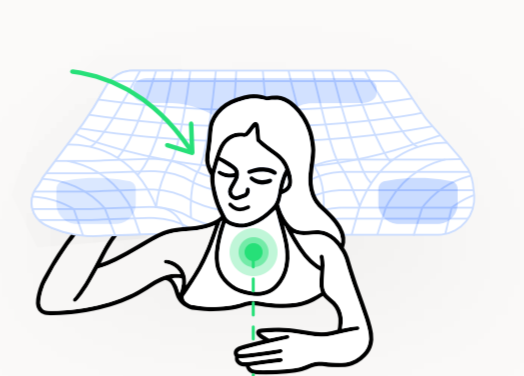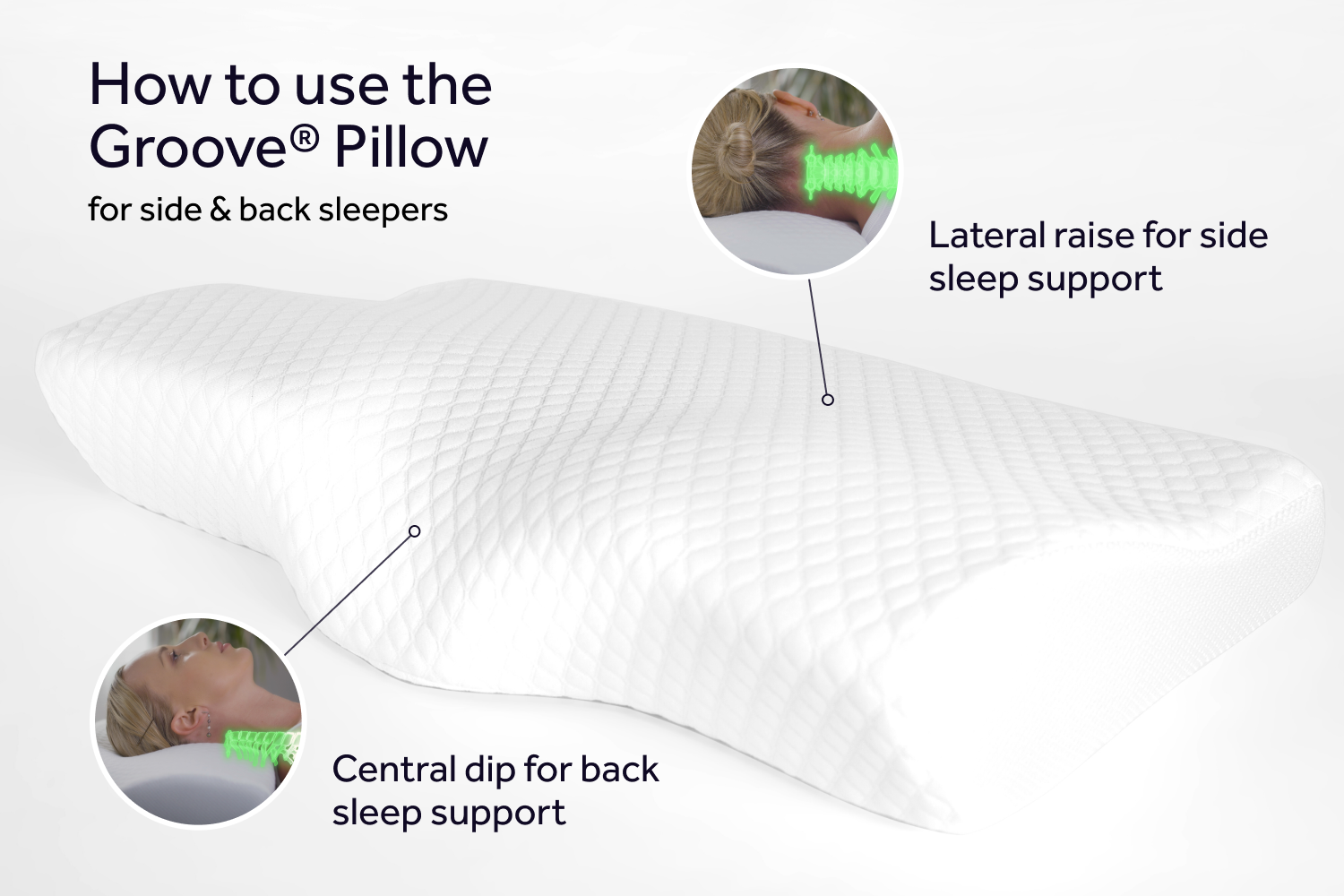How To Sleep On A Memory Foam Pillow

Are you looking for a way to elevate your sleep and nighttime comfort?
Memory foam pillows will change your sleep game. From offering spinal support to providing deeper sleep, these specialised pillows have numerous user benefits.
However, there's a particular technique to sleeping on a memory foam pillow that unlocks their advantages.
Shop Groove PillowsHow To Sleep Properly On A Memory Foam Pillow
Are you sleeping on your memory foam pillow correctly?
Find out how to sleep on memory foam by your dominant sleeping style below.
Side Sleepers
Side sleepers should focus on aligning their head, neck, and spines to reduce neck and back pains.
Place the pillow higher under the neck than the head to keep your spine neutral. You should also keep your chin straight and not tucked in, as this can cause extra pain in the mornings.
If you have a contoured pillow, rest your head on the lateral raised sections.

Back Sleepers
Contoured memory foam pillows are the best pick for back sleepers, and sleeping on your back is the most effective position for reducing neck pain.
Back sleepers should ensure that their head rests in the pillow's cervical dip section. This supports the neck and ensures the spine is aligned.

Stomach Sleepers
Memory foam pillows aren't usually recommended for stomach sleepers. This is because the pillows can leave the head and neck at awkward angles, which actually accentuates pain.
Stomach sleeping, in general, is more likely to cause aches and pains. However, switching to a contoured pillow promotes healthier back sleeping habits and increases comfort.
Browse Our Memory Foam Pillows
Tips On Adjusting To Memory Foam Pillow
If you've never used a memory foam pillow before, sleeping with one might feel more awkward at first.
Don't fear — there's a quick fix to the few common issues users face. Here are some tips to improve your memory foam pillow experience.
- Patience: You also need some patience while the pillow adjusts to your body. This can take a few days, so stick it out for maximum comfort. The length of time this takes depends on the density of the memory foam, and high firmness can take longer to adjust.
- Flatten The Pillow: If your pillow feels too stiff, you can use your hands to flatten the pillow for a minute or two before bed.
- Cooling Pillowcases: Another issue is feeling too hot while using a memory foam pillow. While most modern pillows are now built with cooling materials, you can use cooling (AKA moisture-wicking) pillowcases to reduce the temperature as you sleep.
Different Types of Memory Foam Pillows
Did you know that there are different types of memory foam pillows? That's right. These pillows can tackle different aches and pains and come in various shapes and styles.
Different types of memory foam pillows include:
Contoured pillows
Traditional pillows
Gel-infused pillows
Shredded memory foam pillows
Wedge pillows
Travel pillows
However, the most prevalent options and contoured and traditional memory foam pillows.
Contoured pillows are designed with a dip in the centre to support your next and upper spine. This provides extra neck support, reduces aches and pains, reduces snoring, and ensures healthy spine alignment. However, sleeping with this shape can take some getting used to.
Traditional memory foam pillows don't have the dip for your neck, but they still retain your body shape to offer a better night's sleep. They also relieve upper shoulder pain, provide relief from pressure points, and provide a neutral spine alignment.
However, some might benefit from the extra neck support a contoured pillow offers.
Shop Groove PillowsFinal Words
Need to invest in a memory foam pillow? The Groove Pillow is designed by experts to reduce neck pain and boost comfort for an unbeatable night of deep sleep. Or browse our full range of memory foam pillows here.
Read our Excellent Trustpilot reviews here.
Browse All Our Pillows
